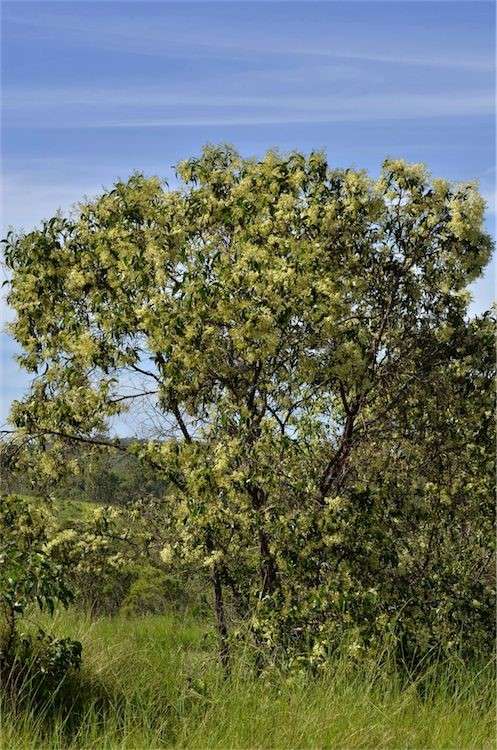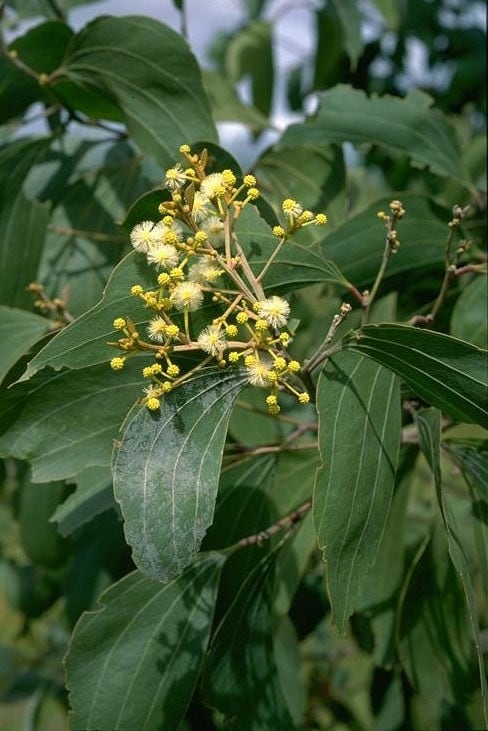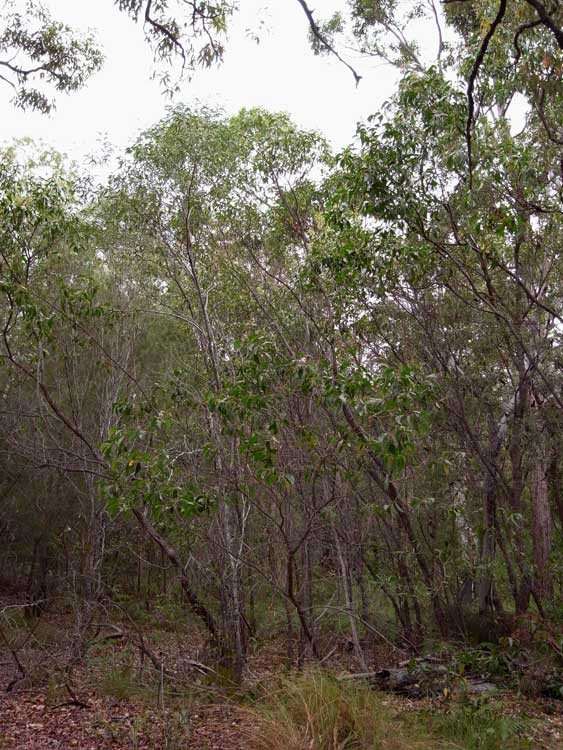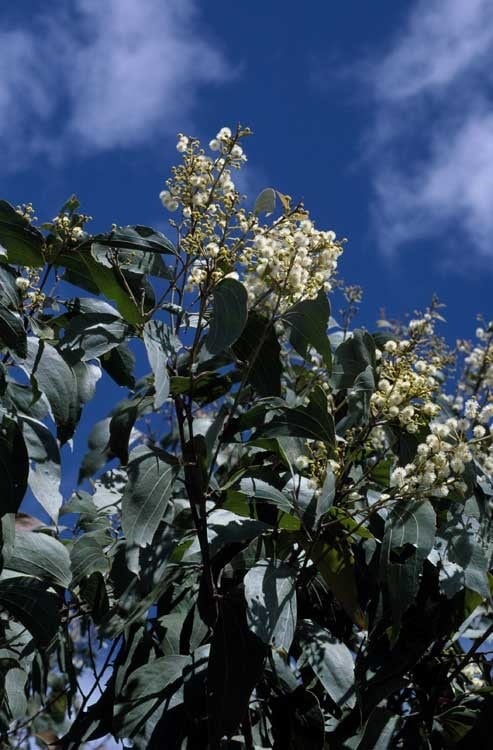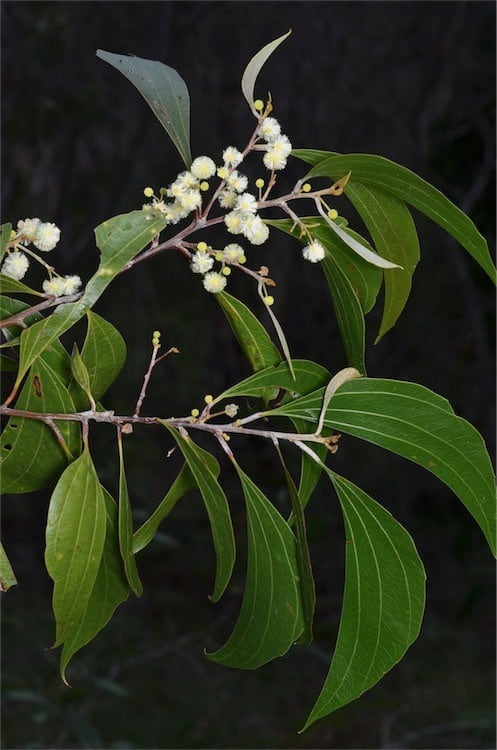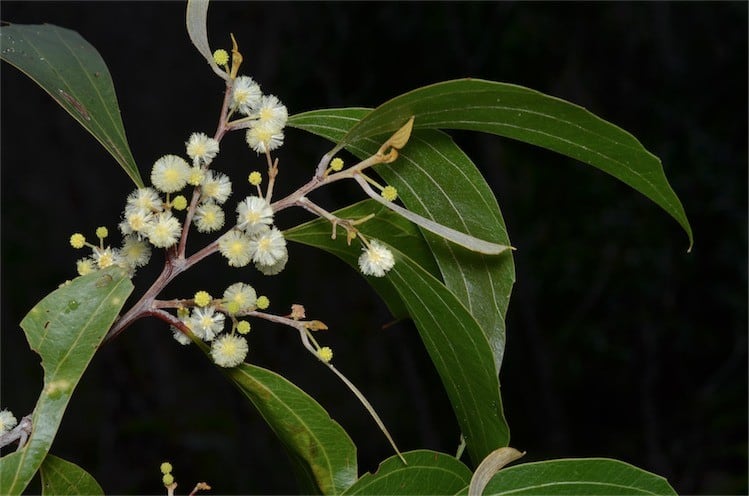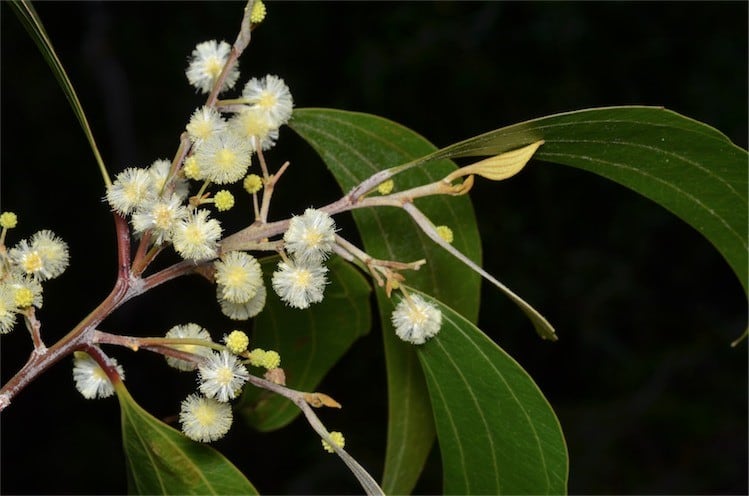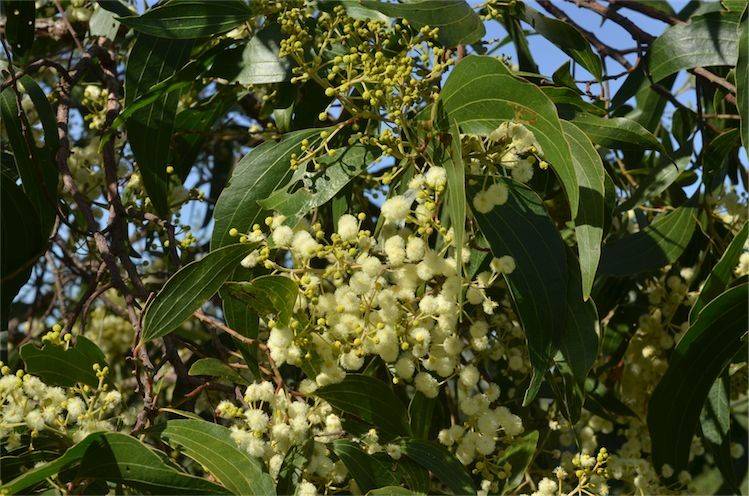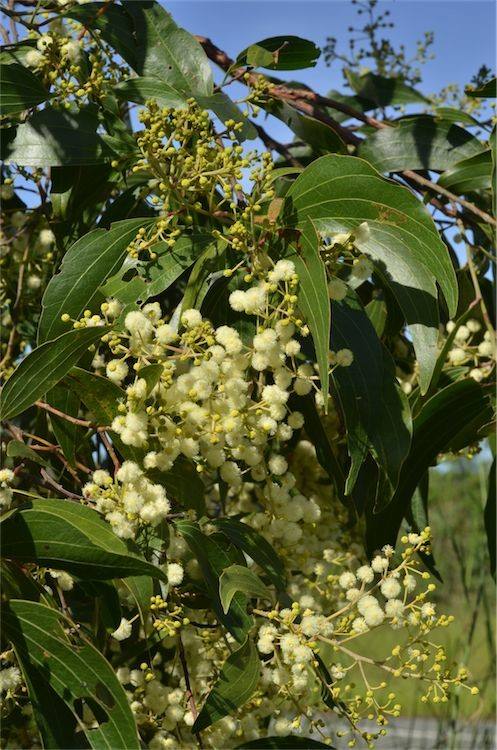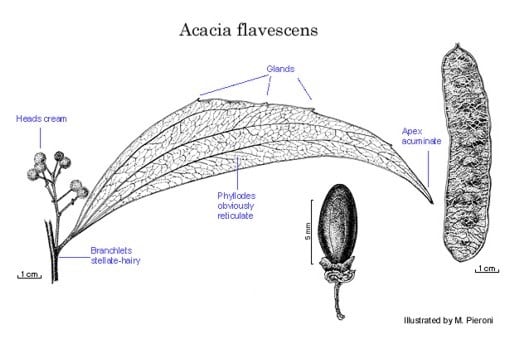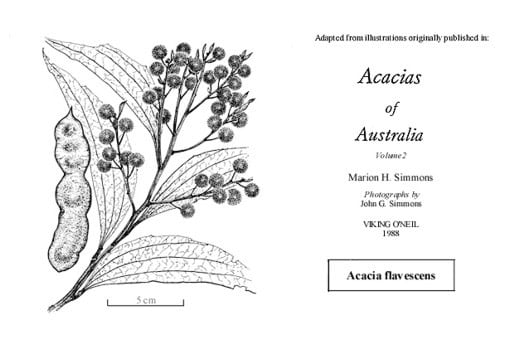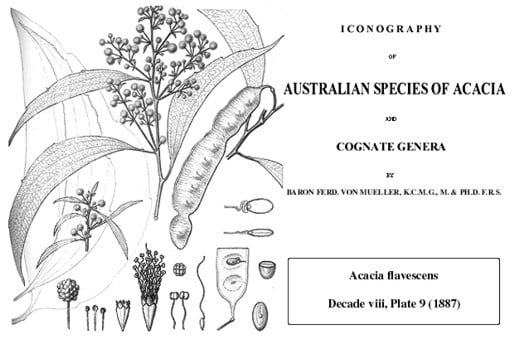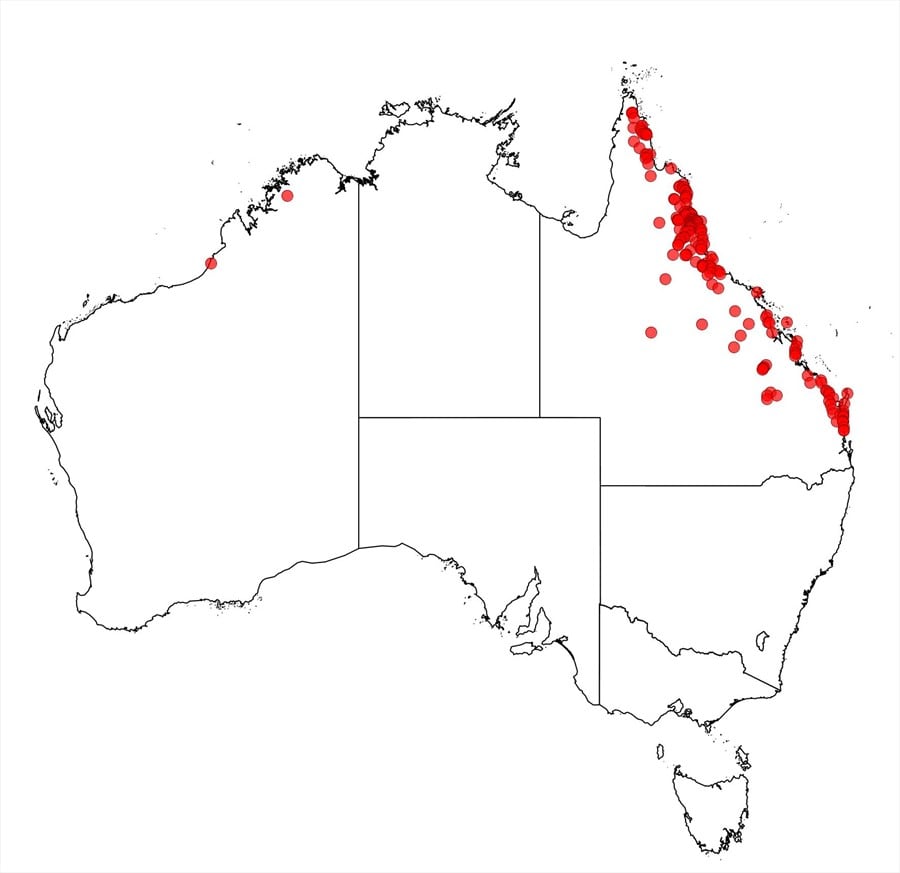Acacia flavescens A.Cunn. ex Benth.
WATTLE
Acacias of Australia
Common Name
Yellow Wattle, Red Wattle
Family
Fabaceae
Distribution
Widespread, mainly in near-coastal areas, from Cape York S to Brisbane, eastern Qld.
Description
Tree 4–20 m high. Bark rough, furrowed and somewhat shaggy. Branchlets stellate-hairy; hairs golden on new shoots. Phyllodes inequilaterally narrowly elliptic to lanceolate, ±falcate, 9–30 cm long, 2–6 cm wide, acuminate (except young plants), ±glabrous, with 3 prominent main nerves (only the lowermost reaching apex) and obviously reticulate in between; basal gland elongated, with 3 or 4 additional smaller glands in indentations or occasionally on short projections along upper margin. Inflorescences in axillary racemes or terminal panicles, sometimes leafy; raceme axes 2–10 cm long, golden stellate-puberulous; peduncles 6–28 mm long, 1 to several per node, yellowish stellate-puberulous; heads globular, 4.5–6 mm diam., 30–60-flowered, cream-coloured. Flowers 5-merous; sepals 2/3–3/4-united. Pods flat, to 12 cm long, 1.5–2 cm wide, thinly coriaceous, transversely reticulate, glabrous. Seeds transverse, elliptic, 6–7 mm long, dull, black, arillate.
Habitat
Grows in sand, in eucalypt forest and woodland.
Specimens
Qld: Little Ramsay Bay, Hinchinbrook Is., R.Cumming 2868 (PERTH); 1.9 km E of Watsonville, C.F.Puttock & P.G.Wilson UNSW13353 (PERTH).
Notes
Seemingly related to A. leptoloba which is most readily distinguished by having smaller, obtuse phyllodes and golden stellate hairs confined to tips of raceme axes and very young phyllodes.
FOA Reference
Data derived from Flora of Australia Volumes 11A (2001), 11B (2001) and 12 (1998), products of ABRS, ©Commonwealth of Australia
Author
R.S.Cowan, B.R.Maslin
Minor edits by J.Rogers
This identification key and fact sheets are available as a mobile application:
URL: https://apps.lucidcentral.org/wattle/
© Copyright 2018. All rights reserved.
